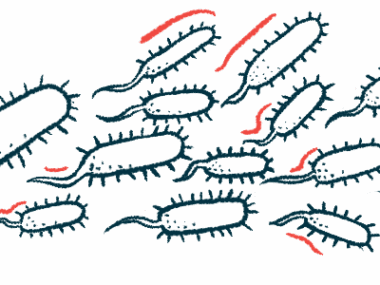Rituximab’s benefits fade quickly for CAD patients in real-word study
Study highlights short-lived improvements, concerning infection risk
Written by |

Treatment with rituximab — commonly used off-label for cold agglutinin disease (CAD) — was found to improve biomarkers of red blood cell destruction in people with CAD, but these benefits were often short-term and reversed within a few months, according to a real-world study in the U.S.
The study also found that serious infections became nearly three times more frequent within six months after starting treatment.
“Rituximab showed a limited durability of response and an increased risk of infection, suggesting the need for more effective and safer treatment options,” researchers wrote.
The study, “Real-World Use of Rituximab in the Treatment of Cold Agglutinin Disease in the United States: A Retrospective Study,” was published in eJHaem. It was funded by Sanofi, the original developer of Enjaymo (sutimlimab-jome), the only CAD-approved therapy now marketed by Recordati.
CAD is a rare autoimmune condition in which self-reactive antibodies, known as cold agglutinins, bind to red blood cells at low temperatures. This causes the cells to clump together (agglutinate) and activates the complement system, a part of the immune system made up of proteins that help destroy foreign or damaged cells. When activated, the complement system marks these clumped red blood cells for destruction, leading to their breakdown in a process called hemolysis. This loss of red blood cells causes anemia and other related symptoms.
Rituximab approved in US for certain blood cancers, autoimmune diseases
Rituximab, an antibody-based therapy approved in the U.S. for certain blood cancers and autoimmune diseases, is widely used off-label as a first-line therapy for people with CAD, alone or in combination with other drugs. Administered intravenously, or into the vein, it works by depleting B-cells, the immune cells responsible for producing the autoantibodies that drive CAD symptoms.
“Despite the off-label use of rituximab in CAD, real-world evidence on the patterns of rituximab use, its safety, its effect on the levels of hemolytic biomarkers, and the duration of benefit in patients with CAD is limited in the United States,” the researchers wrote.
To better understand how rituximab is used in clinical practice for CAD, a team of researchers in the U.S. analyzed real-world data from Optum’s de-identified Market Clarity database, a nationwide healthcare resource that combines electronic health records and claims data, covering the years from 2007 to 2021.
Among the 611 people identified with CAD, 124 had been treated with rituximab after their diagnosis. Of those, 94 with primary CAD — a form of the disease not caused by other underlying conditions such as cancer or infections — were the focus of the analysis. These patients had a median age of 72 and tended to have more severe disease.
Most began rituximab treatment at a median of 43.5 days (about 1.5 months) after their CAD diagnosis. The majority (93.6%) received rituximab as a monotherapy, or without additional drugs, typically in a standard dosing schedule that lasted a median of 21 days (about three weeks) from the first infusion. About 80% completed the first cycle.
“Despite the data suggesting the enhanced efficacy of rituximab with combination therapy, this study provides real-world evidence that rituximab was largely administered as monotherapy,” the researchers wrote. “A possible explanation could be that rituximab monotherapy is preferred over combination therapy in patients with primary CAD … particularly, as combination therapy might not be suitable for frail or elderly patients who form the majority of CAD cases,” they added.
A total of 24 patients received a second course of rituximab, typically started after a median of 493.5 days (more than one year) following the first course, and nearly one-third of them (29%) had not completed their initial treatment. A total of 63% of patients completed the second course.
Rate of serious infections increased in patients treated with rituximab
Because rituximab works by depleting a subset of immune cells that’s needed to fight infections, it’s expected to increase patients’ vulnerability to serious infections. In these patients, the rate of serious infections increased nearly three times within four to six months after starting rituximab, rising from 245.4 to 637.1 cases per 1,000 patient-years, meaning for every 1,000 patients followed over one year.
Sepsis, a life-threatening, body-wide infection, was reported in 12% of patients, while pneumonia, a lung infection, occurred in 7%.
The rates of blood clot-related events and hospitalizations were slightly higher and occurred more frequently over time in the rituximab group compared with the overall CAD population.
Among those treated with rituximab, 66% had lab results available for blood biomarkers of hemolysis at the start of treatment and at follow-up. Overall, these patients began treatment with low hemoglobin — the protein in red blood cells that carries oxygen — and elevated levels of bilirubin, a substance released during the breakdown of red blood cells, and LDH, an enzyme associated with tissue damage.
After treatment, 69.5% of patients experienced a meaningful hemoglobin increase of at least 2 grams per deciliter, typically within 1.5 months. Additionally, 59.6% had a 50% reduction in bilirubin levels, and 31.3% saw a similar drop in LDH, both usually occurring around two months. However, these improvements were often temporary: the rise in hemoglobin lasted a median of 1.5 months before declining again in 68.3% of patients, while reductions in bilirubin and LDH lasted about three months before rebounding in 53.6% and 80% of patients, respectively.
“The short duration of sustained improvement in [biomarkers of hemolysis] and a high rate of the reversal of biomarkers to the threshold level in the current study suggest that rituximab monotherapy may not be very effective in achieving a durable response,” the researchers wrote.







